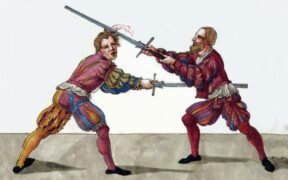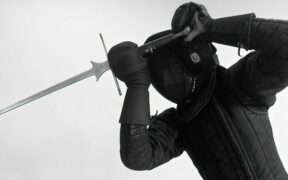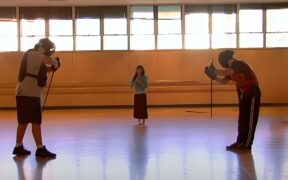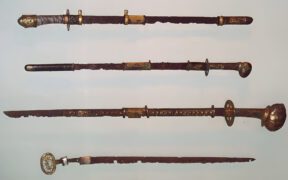Our content features commercial links to our products, committed to transparent, unbiased, and informed editorial recommendations. Learn More
7 Popular Modern Sword Sports That Keep the Sword Tradition Alive
NO AI USED This Article has been written and edited by our team with no help of the AI
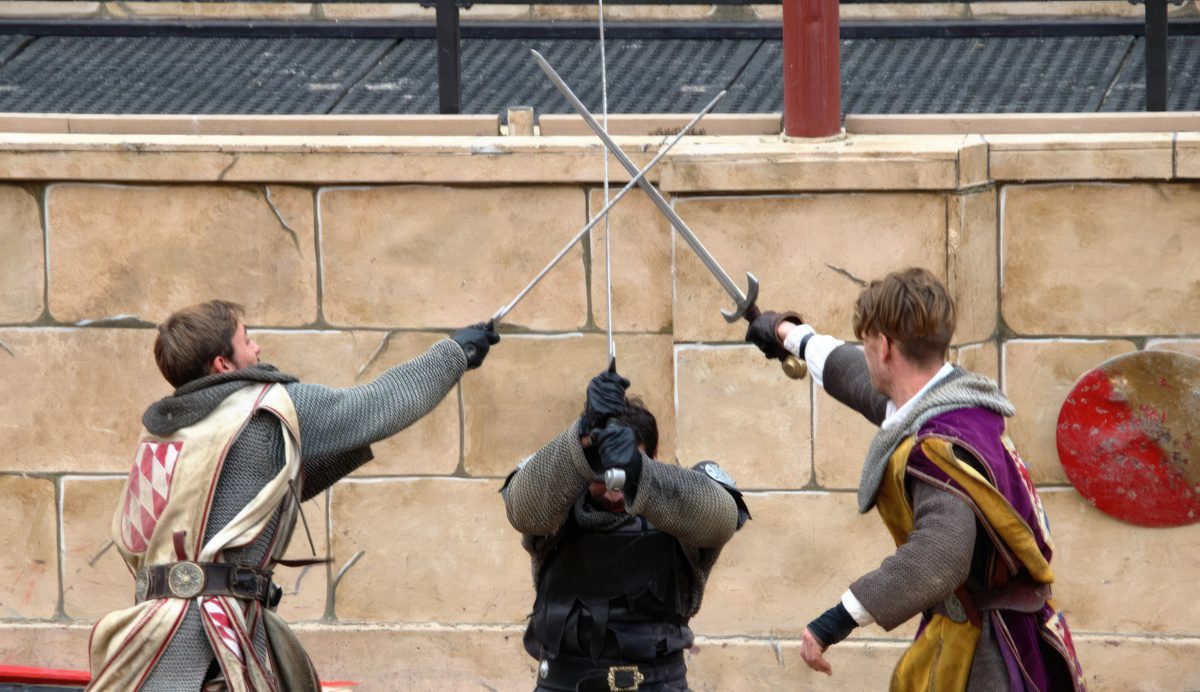
The ancient art of sword sports and fighting has enthralled and motivated people for centuries. Swords have always been associated with strength, honor, and martial prowess, from Roman gladiators and medieval European knights to Japanese feudal Samurai. It was difficult to identify the greatest swordsman because swordsmanship had evolved, giving birth to new strategies, styles, and weapons; thus, sword sports were born.
Today sword sport is a popular form of recreation and competition that puts participants’ talents to the test in a safe and organized setting. In this article, we will explain in detail what is and can be considered a sword sport and mention some of the most popular modern sword sports today.
What is Sword Sport?
Sword sport is a type of combat sport in which competitors use swords or sword-like weapons to defeat their opponents. These sports necessitate a great level of ability, speed, strategy, and understanding of many sword fighting styles and are often practiced in a regulated setting.
Dueling and sword fighting has been documented in ancient cultures such as Greece, Egypt, and Rome, demonstrating that sword sports have a long and storied past. As swords got more sophisticated and specialized, new fighting styles and methods emerged. In Europe, during the Middle Ages, swordsmanship was a major component of the martial education of knights and warriors.
Sword sports now include everything from classical Japanese swordsmanship to cutting-edge Olympic fencing. Points are awarded in most sword sports for successfully striking designated target areas or displaying exceptional skill and control. Modern sword sports also place a premium on safety and good sportsmanship, with rules and regulations in place to avoid serious injuries and guarantee a level playing field for competitors.
It is possible to label any type of martial art that use swords as a sword sport by including rules of combat, gear, certain investments, and an award for the victor. Even gladiator fights were organized sports and not just seemingly bloodshed. In fact, contrary to popular belief, not many gladiators fought to the death as it wasn’t good for sport or the investment put into it.
1. Fencing
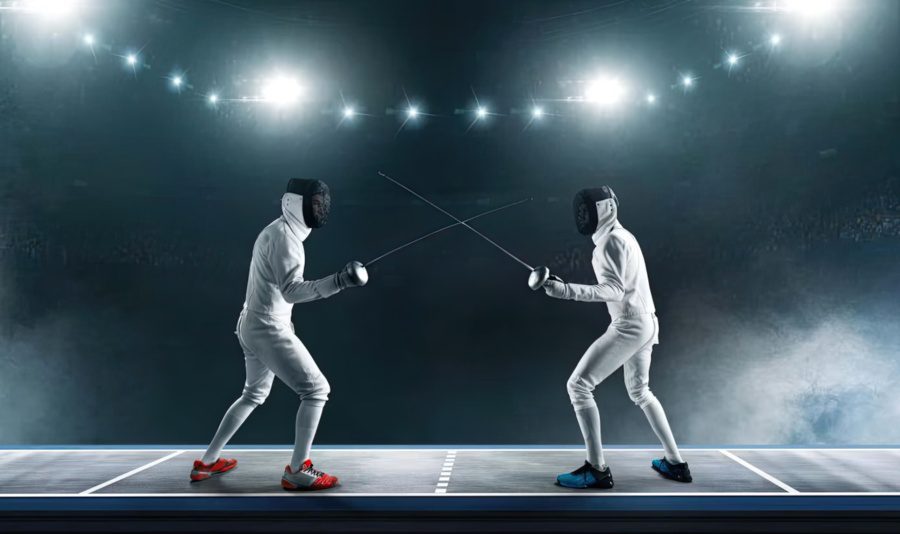
Fencing is a competitive modern sword sport and recreational activity that emerged in the nineteenth century and has been a well-known Olympic sport since 1896. Two fencers, each holding a foil, épée, or sabre, face off against one another in a bout where they attempt to score points by hitting their opponent in a predetermined target area while avoiding being hit themselves.
The blades of today’s fencing weapons are produced from lightweight unsharpened metals like steel and aluminum, making the sport more accessible to a wider audience. Fencing competitions can be dangerous, so athletes wear masks and other protective gear. The sport is divided into three categories, each with its own regulations and scoring methods.
- Foil Fencing – Torso
- Epee Fencing – Whole body
- Sabre Fencing – Head, torso, and arms
Fencing is the most popular sword sport as it’s thrilling and difficult because it calls for quick reflexes, pinpoint accuracy, strategic planning, and careful footwork. New fencing methods and styles appear frequently in today’s competitive scene. Fencing nowadays is an exciting and innovative introduction to the world of sword sports for newcomers and seasoned competitors.
2. Kendo
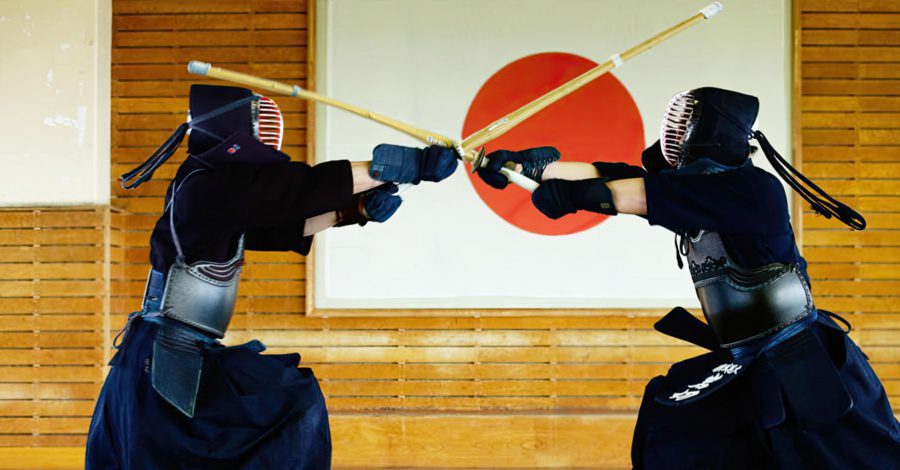
Kendo is a form of Japanese sword sport developed from the ancient martial art of kenjutsu. It is distinguished by the use of bogu (protective armor) and shinai (bamboo swords). As a result of its growing popularity, kendo tournaments and other international events are frequently conducted in which both genders participate.
Kendo is a Japanese martial art and sword sport where points are earned by scoring hits to certain parts of the opponent’s body, such as the torso, head, or wrists. Kendo is a highly complex and disciplined sport due to the precision with which the strikes are executed, which requires a mix of footwork, body alignment, posture, and correct use of the sword.
The martial art of Kendo places a premium on teaching its students self-control, respect for others, and good sportsmanship in addition to developing their physical abilities. Because of its focus on developing oneself and self-awareness, Kendo has gained a wide following among individuals of all ages.
3. Iaido
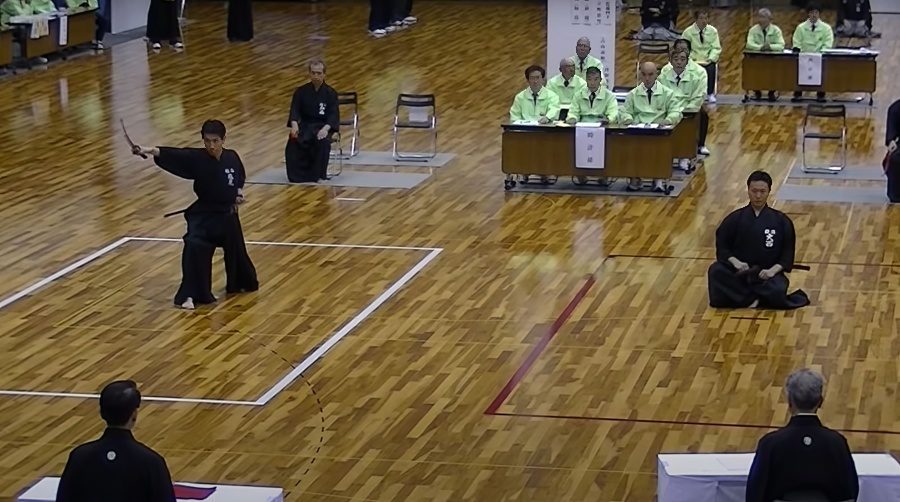
When practicing Iaido, a traditional Japanese sword art, the practitioner devotes their full attention to the art of drawing and cutting with the Katana. Students find that participating in this journey helps them gain a sharper sense of focus, clarity, and awareness while fostering a profound appreciation for Japanese culture and heritage.
However, Iaido has its own competitive swordsmanship division. The All Japan Iaido federations oversee the sport, which uses a competitive sword and features judges who award points depending on how well competitors execute specific sword forms and moves.
The Katana, typically an authentic steel Shinto, or for the novice, a wooden Bokken, is the primary tool used in Iaido, where practitioners execute a variety of forms and sequences of attacks. Scoring for unsheathing, striking, blood removal, and sheathing takes into account the participant’s movability, accuracy, fluidity, and control.
4. Hema Alliance Tournament
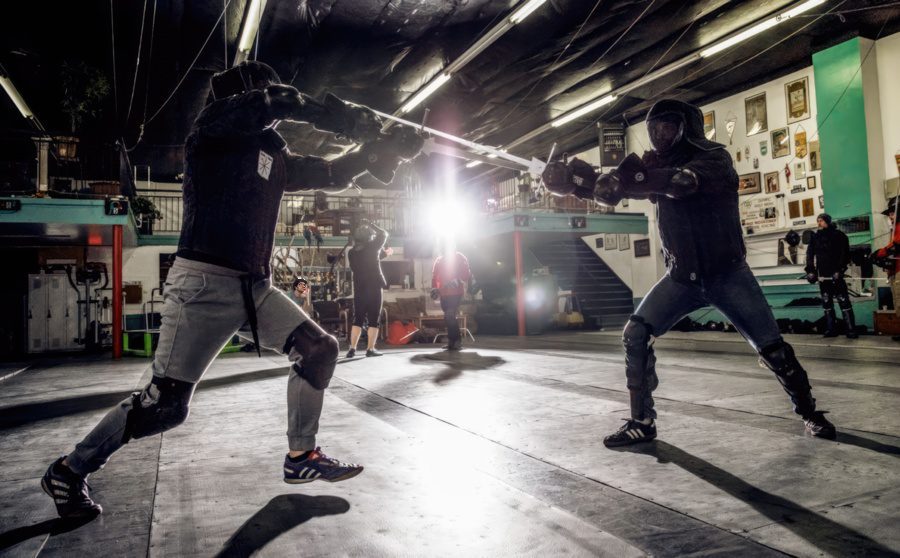
HEMA, or Historical European Martial Arts, is a term for training in European martial arts spanning from the late Middle Ages through the Renaissance. Practitioners use historically accurate replica weapons, armor, and swords to best reenact past fighting styles. HEMA is an umbrella term used for many European sword sports based on the swords or weapons used.
The HEMA Alliance is a non-profit organization that encourages people to learn about and train in the HEMA style. The HEMA Alliance, founded in 2001, has grown to include more than 1,500 members from the United States and Canada, making it one of the biggest groups in the HEMA world, representing more than 40 distinct HEMA sword sports.
This sport of fencing involves real fighting, wrestling, and sparring between combatants by using a variety of swords starting from the 14th century and can be combined with or without a shield. Here are some of the most popular swords and fighting styles used.
- Medieval Longsword – Swordplay and fundamentals of the 14th and 15th-century longsword manuals.
- Sabre Sword – Curved later European sabers with protective guards like basket hilts that offer quick slashing attacks.
- Rapier Sword – Rapier fencing with lunge attacks and parrying without catching the opponent’s blade.
- Sword and Buckler – A one-handed arming sword or saber with a small buckler for defense.
- Two-Handed Great Sword – Large European greatswords like the Zweihander or Montante and following the manuals for their fencing styles.
HEMA Alliance is committed to offering the greatest levels of safety despite using what is essentially historical warfare by employing swords that have been blunted. Because the sport tries to bring the realism and authenticity of HEMA through world championships, the highest levels of professionalism and sportsmanship are still required.
5. SCA Heavy Combat
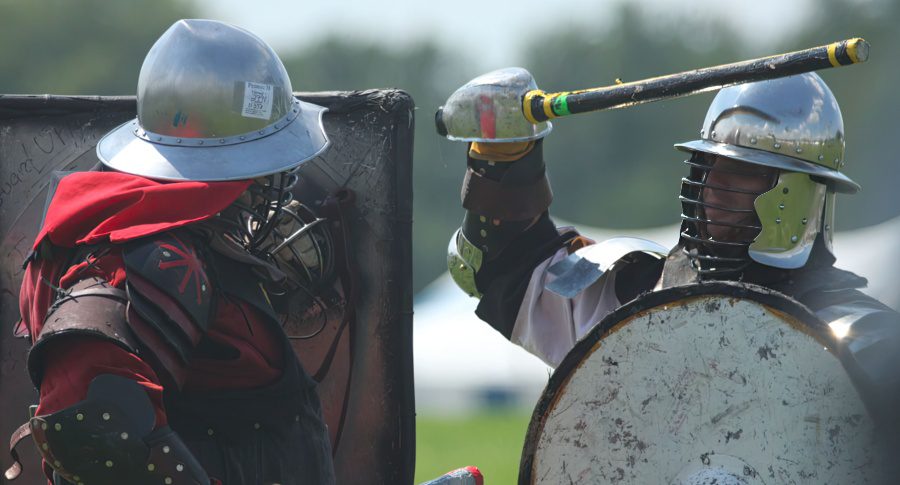
The Society for Creative Anachronism, or SCA, is an international, non-profit educational organization dedicated to the study and recreation of sword fights during the Middle Ages through the Early Modern Period, roughly 600-1600 A.D. It is a heavy combat mock sport involving heavy competitive actions between opponents without the intention of lethally harming one another.
The blades of the swords are dulled, and the armor is designed to prevent injury. Individuals can engage in one-on-one swordfights, and groups of up to 2,000 players can join large-scale reenactments of historical battles.
The SCA has strict regulations and guidelines for all tools and equipment used, and most striking swords are made of rattan. Judges and spectators award hits and points based on their assumptions of how much damage a historical blade inflicted. This sword sport allows for wrestling and even judo throws, and the scoring system can conclude a fight even with a single, strong blade hit on a combatant.
6. Battle of the Nations
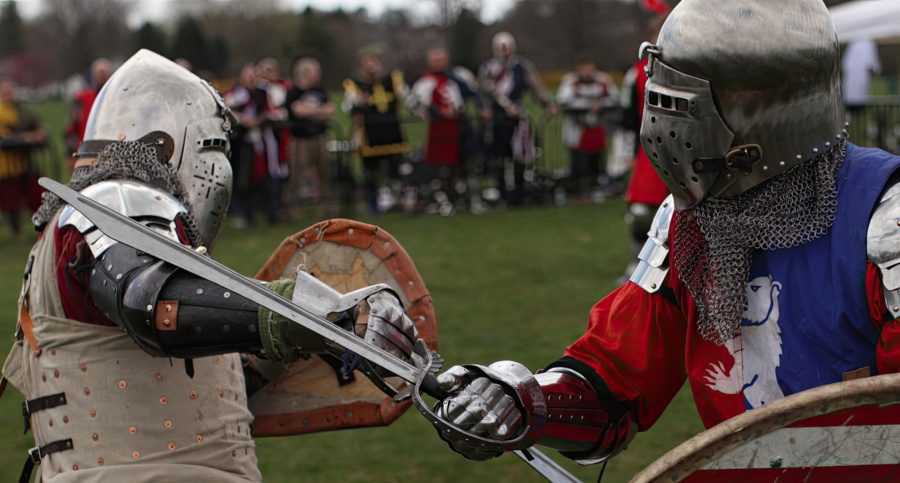
The Battle of Nations is a medieval tournament focused on immersion both inside the combat arena and out. It is an annual international event based on HEMA combat founded in 2009 with competitors from more than 30 countries where competitors represent their nation.
There are various battle categories, but all are based on safety and strictly following rules and historical battle authenticity. It requires great skill and strength because some battles require wrestling which puts a lot of physical demands on one’s body. Here are some popular sword sports participating in the Battle of Nations.
- Sword and Shield
- Sword and Buckler
- Longsword
- Professional fight with rounds and different swords
- Massive battle events
This sword sport is based on a specific team or party that must do everything to defeat the opposing team, and there are no stage reenactments. Its central tenet is using steel swords and armor in full-contact fighting.
7. International Medieval Combat Federation
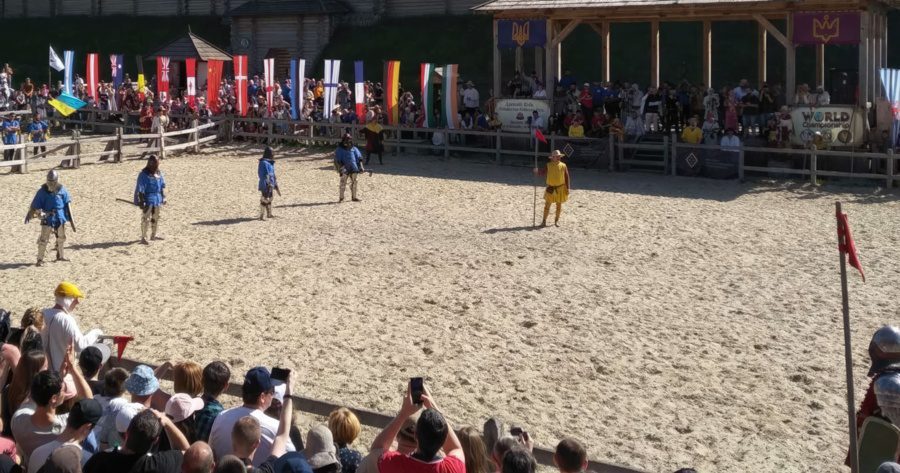
The International Medieval Combat Federation is another popular full-contact sword sport, with competitors donning period-appropriate armor and weaponry to battle under detailed rulesets based on period fighting manuals. Fighting with more than just swords, it is sometimes called medieval mixed martial arts (MMMA).
Each sword used in this sport must be an exact reproduction of an existing historical blade, such as those found in museums worldwide. Steel, blunt, and occasionally paired with a shield, these swords follow rules from sources like King René of Anjou’s tournament book from 1460. This tournament book describes a style of tournament adapted from ancient French customs.
Two sword fighting can take the form of either solo duels or massive conflicts with multiple competitors in each team. Medals of bronze, silver, and gold are awarded to the best overall national team, as well as individual champions.
